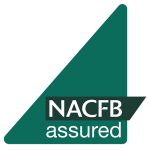By Matthew Dilks, Bridging and Commercial Specialist, Clever Lending
Given the continued uncertainty in the mortgage market and wider UK economy, reports of ageing landlords selling up and retiring from the buy-to-let (BTL) sector can be generally viewed as unsurprising. According to estate agency Hamptons, around 140,000 landlords left the sector last year, accounting for almost three quarters of all property sales by BTL investors.
Changing Demographics of Exiting Landlords
However, the figures show that it is predominantly older landlords leaving the market, many of whom were the early adopters of the first BTL mortgages in 1996. The report also shows that approximately 96,000 landlords in the UK are expected to turn 65 years old this year, suggesting many more may follow suit.
While the ongoing media speculation of a mass BTL exodus could be viewed as alarming, the fact is that many of these landlords entered the BTL market for the very reason they are now leaving – to fund their retirement.
This means that their recent exit presents an opportunity for those remaining in the sector to capitalise on their divestments and improve their existing yields by purchasing additional property and expanding their portfolios using a bridging loan.
Bridging Loans: A Strategic Financial Tool
A bridging loan is an excellent financial tool that can be used by landlords and investors actively looking to expand their portfolios as it allows them to act quickly and seize opportunities as they arise. This is particularly attractive for those looking for a quick cash injection to purchase a property where there is a very short completion deadline.
It is also appealing for those seeking to purchase a property that is below market value or capitalise on any tenanted properties that may go to auction, as the ability to move quickly is likely to act in their favour, as the funds can be released within weeks.
Bridging loans can also be used to purchase other properties at auction, such as those deemed to be unmortgageable because they have fallen into disrepair or have no working bathroom or kitchen. In this case, taking out a bridging loan will allow the investor to purchase and refurbish the property to a much higher standard, before selling it on or remortgaging and renting it out to repay the loan.
Unlocking Property Potential
Being agile is also appealing in cases where an investor may need to raise capital in order to carry out improvements to an existing property, particularly during periods of transition when one tenant leaves and another moves in. By taking out a bridging loan, investors can use the money to bring under-performing assets up to scratch in order to achieve maximum returns.
Whether the funds are used for simple changes such as painting or decorating or extensive repairs and renovations to existing stock, using bridging as a tool to update a property can help landlords improve its kerb appeal, increase its value and subsequently improve yields.
Capitalising on Market Shifts
While there is no denying that the current volatility in the mortgage market is causing ripples throughout the BTL sector, it is important to note that the affordability pressures and reduced disposable income levels facing landlords and investors are being felt throughout the entire market.
However, with long-established older landlords choosing to retire from the BTL sector, there is still an opportunity for brokers with clients looking to expand their portfolio or even enter the sector, to capitalise on the current changes.
Using a bridging loan as a means of capital raising will enable investors gain swift access to cash and provide them with the ability to move quickly on a purchase or project, an important ability in a rapidly changing market.


